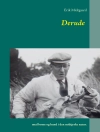In ‘On the Method of Zadig, ‘ Thomas Henry Huxley presents a profound investigation into the nature of reasoning as it pertains to scientific inquiry and philosophical contemplation. This work, echoing the satirical narrative style of Voltaire’s own ‘Zadig, ‘ deftly explores the interplay between belief and empirical evidence, set against the backdrop of the 19th-century scientific revolution. Huxley employs a blend of logical analysis and narrative-driven discourse to challenge the prevailing dogmas of his time, consequently situating his argument within the broader context of the debate between science and religion, particularly in the wake of Darwinian theory. Huxley, often referred to as ‘Darwin’s Bulldog’ for his defense of evolutionary theory, was deeply influenced by the upheaval of scientific thought during his lifetime. His commitment to empirical science and rational thought emerged from a rich academic background in biology and paleontology, alongside a fervent desire to reconceptualize humanity’s understanding of morality and knowledge in a rapidly changing world. Huxley’s own struggles with religious orthodoxy and the embrace of scientific skepticism shaped the compelling arguments laid out in this text. ‘On the Method of Zadig’ is essential reading for anyone invested in the philosophical implications of scientific inquiry. Huxley’s incisive critiques and eloquent prose invite readers to reconsider their preconceived notions of truth and evidence. This enlightening examination is not only relevant for scholars of science and philosophy but also for any curious mind seeking insight into the complexities of intellectual thought in the modern era.
Giới thiệu về tác giả
Thomas Henry Huxley (1825–1895) was a prominent English biologist, known principally for his staunch advocacy of Charles Darwin’s theory of evolution and for his pioneering work in comparative anatomy and paleontology. Huxley’s contributions to the scientific community were profound, earning him the moniker ‘Darwin’s Bulldog’ for his spirited defense of evolutionary theory against religious and scientific opposition. A prolific writer and speaker, Huxley’s oeuvre includes ‘On the Method of Zadig’ (1880), a treatise embodying his approach to scientific inquiry based on the forensic search for evidence and inferential reasoning, drawing from Voltaire’s tale of Zadig in stressing the importance of interpretation in natural history. His literary style is characterized by clarity, directness, and a dedication to the scientific method, underscored by his foundational role in establishing nature as the core of biological study. Huxley’s ardor for education reform and his efforts to make science accessible to the public are reflected in his other significant works such as ‘Evidence as to Man’s Place in Nature’ (1863) and ‘Science and Education’ (1893). His enduring influence is marked by his establishment of biology as a distinct modern science. Huxley’s erudition and public engagement have left an indelible mark on both the scientific landscape and the broader cultural understanding of human origins and the natural world.












